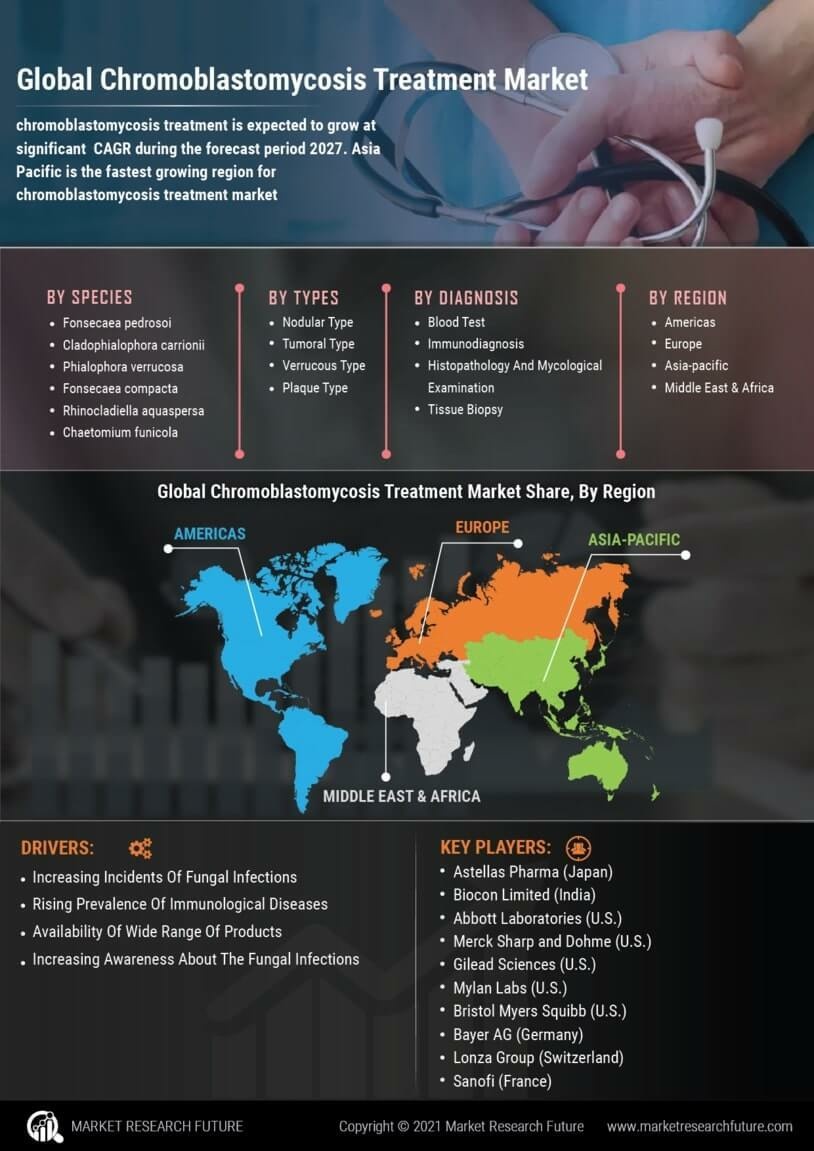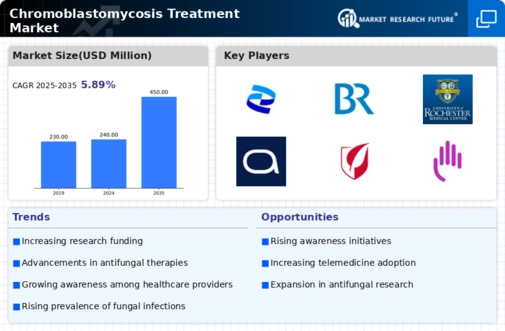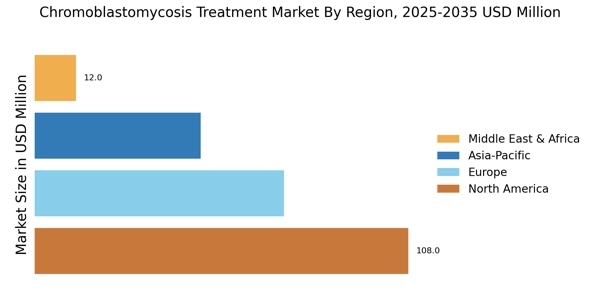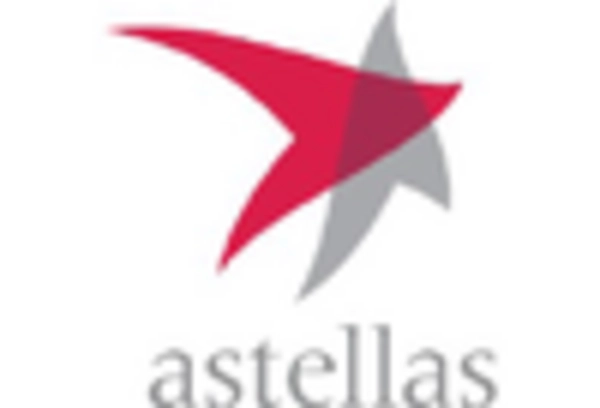Rising Healthcare Expenditure
Rising healthcare expenditure across various regions is contributing to the growth of the Chromoblastomycosis Treatment Market. As countries allocate more resources to healthcare, there is an increased focus on treating infectious diseases, including fungal infections like chromoblastomycosis. This trend is particularly evident in developing nations, where improving healthcare infrastructure and access to treatments is a priority. Higher spending on healthcare translates to better availability of antifungal medications and treatment options, which is likely to drive market growth. Furthermore, as healthcare systems evolve, there is a growing emphasis on comprehensive care, which includes the management of chronic infections.
Increasing Incidence of Chromoblastomycosis
The rising incidence of chromoblastomycosis is a notable driver for the Chromoblastomycosis Treatment Market. This fungal infection, primarily affecting individuals in tropical and subtropical regions, has been observed to increase due to environmental factors and changes in agricultural practices. Reports indicate that the prevalence of chromoblastomycosis has been on the rise, with estimates suggesting thousands of new cases annually. This growing patient population necessitates the development and availability of effective treatment options, thereby propelling the market forward. As healthcare systems become more aware of this condition, the demand for specialized treatments is likely to escalate, further stimulating market growth.
Technological Advancements in Diagnostic Tools
Technological advancements in diagnostic tools are significantly influencing the Chromoblastomycosis Treatment Market. Enhanced diagnostic capabilities allow for earlier detection and more accurate identification of chromoblastomycosis, which is crucial for effective treatment. Innovations such as molecular diagnostics and imaging techniques have improved the ability to diagnose this condition, leading to timely interventions. As a result, healthcare providers are better equipped to manage cases, which may lead to an increase in treatment uptake. The market is expected to benefit from these advancements, as they not only improve patient outcomes but also encourage further research and development in treatment modalities.
Emergence of Telemedicine in Treatment Delivery
The emergence of telemedicine is reshaping the landscape of the Chromoblastomycosis Treatment Market. With the increasing adoption of telehealth services, patients are gaining easier access to healthcare providers for consultations and follow-ups. This trend is particularly beneficial for individuals in remote or underserved areas, where access to specialized care may be limited. Telemedicine facilitates timely diagnosis and treatment initiation, which is crucial for managing chromoblastomycosis effectively. As telehealth continues to expand, it is expected to enhance patient engagement and adherence to treatment regimens, ultimately contributing to improved health outcomes and driving market growth.
Growing Investment in Fungal Infection Research
The growing investment in research focused on fungal infections is a key driver for the Chromoblastomycosis Treatment Market. Increased funding from both public and private sectors is being directed towards understanding the pathophysiology of chromoblastomycosis and developing novel therapeutic agents. This influx of resources is likely to accelerate the pace of innovation in treatment options, including antifungal therapies and combination treatments. As research progresses, new findings may lead to more effective and targeted therapies, which could enhance patient outcomes and expand the market. The commitment to addressing fungal infections reflects a broader recognition of their impact on public health.


















Leave a Comment